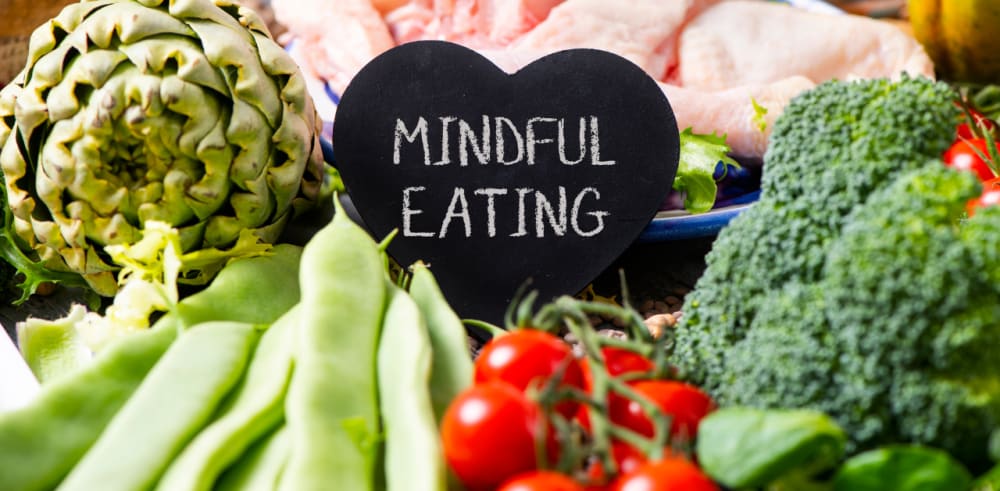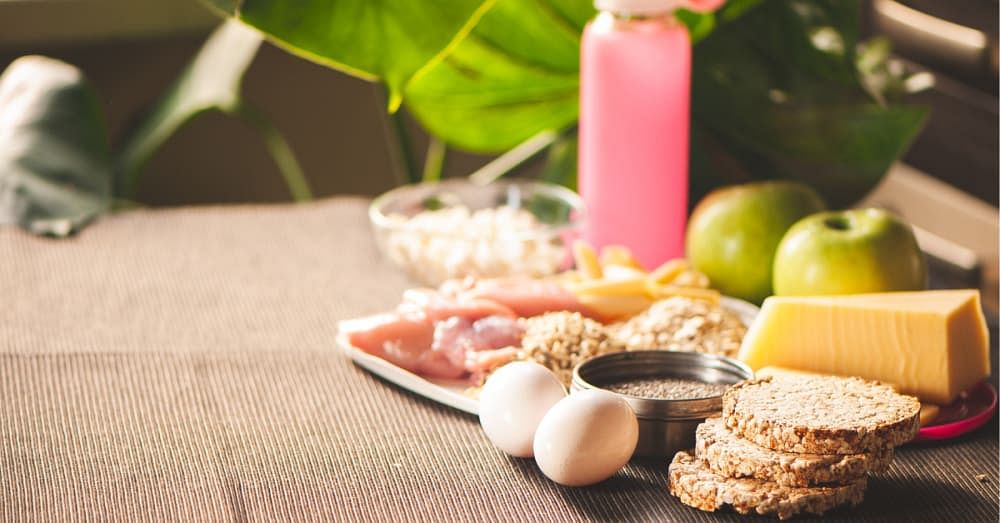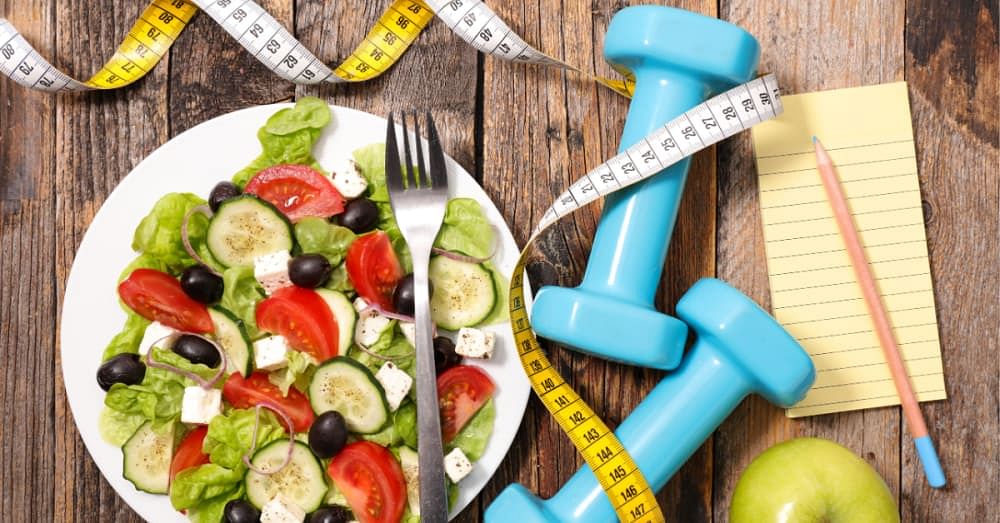Healthy food and lifestyle are the basis of a fit body. A complete meal should consist of all the necessary nutrients required to nourish the body in the proper proportions. Calcium is an essential nutrient that the human body requires for maintaining the strength of bones and teeth. There are many calcium food veg in India that fulfil this need. To know about them, read further.
What Is Calcium?
Calcium is one of the essential nutrients that the human body and all living organisms require. This nutrient is needed to maintain bone and tooth health. About 99% of the body’s calcium is present in bones and teeth.
An important fact to note related to calcium is that Vitamin D is necessary for absorbing calcium in the body. The wholesome Calcium rich Indian foods with the rest essential nutrients are vital for good health. If you wonder how to increase calcium, discussed below is a list of calcium rich food veg in India.
Calcium Rich Foods in India
As per NHS, adults between the ages of 19 to 65 should consume about 700 milligrams of calcium per day. The nutrient may be obtained from dairy products, calcium rich Indian food, or sunlight. Here is a list of Indian foods that are rich in calcium.
1. Whole Cereals (Ragi)
The whole cereals used in almost all households in India are rich in calcium nutrients. Ragi is grain available in flour form and can be used to make ragi idli, dosa, or even upma. It is important to note that Ragi, also called nachni, is widely used in the west region of India.
A ragi uttapam could give 5% of the day’s calcium requirement.
Calcium content:
40 milligrams of calcium per 100 grams serving of ragi dish.
How to include it in your diet:
Ragi can be consumed in ragi idlis, uttapams, or dosas.
2. Nuts and Oil Seeds
Sesame seeds, chia seeds, flax seeds, walnuts, peanuts, sesame seeds are good sources of calcium. These seeds are rich in calcium and can easily form a part of the diet. You can try the pineapple chia seeds and pear juice. The vitamin C in pineapple helps in the calcium nutrient absorption process.
Calcium content:
Serving size of 150 grams of nuts or seeds offers 130 to 140 milligrams of calcium.
How to include it in your diet:
It may be consumed in the form of salads, juices, or parts of dishes.
3. Broccoli
Broccoli soup or juice consumption is quite common in today’s diets. Essential nutrients such as calcium, vitamins, and minerals are available in broccoli. You can also consume it in various other forms. However, avoid overcooking the same, as it could cause a loss of nutrients.
Calcium content:
A cup of Brocolli has about 180-190 milligrams of calcium.
How to include it in your diet:
Broccoli soup and juice are the widely preferred modes of broccoli consumption.
4. Oranges
Oranges are rich in Vitamin C, which is beneficial for the bones and teeth. They are also rich in calcium. Orange is a calcium rich fruit that contains fat-soluble vitamins, which allow your body to absorb calcium. Whole oranges are also a good source of fibre. Each cup of orange segments consists of about 4 milligrams of fibre.
Calcium content:
Every 100 grams of orange has about 40-50 milligrams of calcium content.
How to include it in your diet:
Oranges can be consumed directly or in the form of juice.
5. Okra
The daily household consumption of okra dishes in fried stirred and other forms are well known. Okra is rich in both micro and macronutrients. If your diet has low calcium content, add an okra dish. It is also low in calories.
Calcium content:
The Okra has about 170 grams of calcium content even when cooked completely.
How to include in your diet:
Okra can be consumed after being properly fried, stirred, and sauteed with the right spices.
6. Drumsticks or Moringa
The popular food of India, drumsticks (also known as Moringa) is a superfood in terms of calcium content. There are several Indian recipes around the cooking and consumption of drumsticks. It is a commonly consumed vegetable in India.
Calcium content:
Per 150 grams of drumsticks have 440-450 milligrams of calcium.
How to include it in your diet:
Drumsticks may be consumed after being cooked in tomato gravy.
7. Sweet Potatoes
Sweet potatoes are sweet when cooked and have sufficient nutrients to nourish the human body. When cooked, sweet potatoes are among the best calcium rich vegetables. Sweet potatoes are prepared in multiple ways across India. One of the most popular and easily accessible snack in winters are roasted sweet potatoes.
Calcium content:
The per 100 gram serving of sweet potatoes has about 78 milligrams of calcium content.
How to include it in your diet:
Cooked sweet potatoes can be consumed directly.
8. Almonds
Yes, almonds are among the calcium rich foods that you can consume every day. A single cup of roasted almonds has 450 milligrams of calcium. As per studies, Almond also help in reducing the risk of heart disease and are high on proteins. Almonds are known to help in memory as they have a high content of protein nutrients.
Calcium content:
457 grams of calcium per serving make almonds a superfood.
How to include it in your diet:
Soaked almonds and roasted almonds are the two easiest ways to include them in the diet.
9. Yoghurt
Yoghurt consists of good bacteria, which strengthens the body’s metabolism. The yoghurt is available in various flavours, and the bacteria act on your gut. It activates the gut immune system, which makes the system free of any foreign particles. Also, it strengthens the digestive tract. It has a good amount of protein and can be substituted for milk.
Calcium content:
The single yoghurt serving has much as 400 milligrams of calcium content.
How to include it in your diet:
Yoghurt can be consumed directly. It can also be consumed in the form of lassi, chaas, kadhi and raita.
10. Soybeans
Soy is a rich source of calcium. It is consumed in various forms. Also, it is low on carbs, thus making it a diet-friendly calcium rich Indian food. Soy is also known as a vegetarian source of protein.
Calcium content:
A single cup of cooked soybeans has about 175 milligrams of calcium content.
How to include in your diet:
Cooked soybeans with the right spices could be consumed directly. You can also try soy-tofu, soybean, or other forms.
11. Spinach
The green veggie, spinach, is rich in all kinds of nutrients. It is one of the commonly found green vegetables in India. Proteins, calcium, and essential minerals are the main constituents of spinach. Cooked spinach can be consumed as a part of the day’s meal.
Calcium content:
Each serving of spinach has about 250 milligrams of calcium.
How to include it in your diet:
The spinach can be consumed in forms such as cooked gravy, salad, smoothies, parathas and much more.
12. Pudina chutney
The pudina chutney is one of the beloved Indian side dishes that are rich in calcium. As per studies, It is helpful to reduce inflammation on the stomach and can help conditions such as nausea. The consumption of the same could provide a soothing effect on the stomach.
13. Cumin (jeera)
Jeera is an essential source of proteins and iron content. It has a significant amount of antioxidants. All the nutrients are present in a balanced proportion in cumin seeds. Most dishes in Indian cuisine have cumin, so consuming homemade Indian dishes regularly will ensure a sufficient intake of calcium.
Calcium content:
Jeera has about 18 grams of calcium; macro and micronutrients in one tablespoon serving size.
How to include it in your diet:
Jeera can be consumed daily. It can be added as a spice to several dishes, chaas and lassi. Further, having jeera water on an empty stomach can also be helpful.
14. Fox Nuts
A high-energy superfood, makhana is a rich source of protein and has low-fat content. Also known as makhana, they are also good for stomach health and kidney. They also contain a variety of other nutrients.
Calcium content:
Makhana has about 60 milligrams of calcium content per 100 grams.
How to include it in your diet:
It can be roasted for consumption.
15. Coriander Leaves Chutney
The coriander leaves are good a rich source of Vitamins C and K, making coriander chutney a good option for people with diabetes. Further, coriander is known to have a good effect on heart health. it can stimulate insulin levels and lower blood sugar levels.
16. Cheese
Used for consumption with almost all types of snacks, cheese is a good source of calcium.
Calcium content:
A single cup of cheese has about 951 milligrams of calcium content.
How to include it in your diet:
Cheese can be easily consumed by topping over any snacks.
17. Mustard Greens
Mustard greens are a calcium rich meal that contains highly absorbable calcium. Among India’s calcium rich vegetables, mustard greens are a great source of beta carotene and vitamins such as thiamine and pyridoxine. They are rich in dietary fibre. Including mustard greens as a part of a routine diet can prove beneficial to the body.
Calcium content:
The mustard green has about 120 milligrams of calcium per 100-gram serving.
How to include in your diet:
Mustard greens can be cooked and consumed in the form of mixed salads or adding it to the soup. Also, one can prepare a side dish of the same by roasting mustard greens with spices and garlic.
18. Milk
Milk contains a high amount of calcium that works well for adults and children. Apart from that, it is also a good source of vitamin A, vitamin D and protein. Low-fat milk has the highest amount of calcium with the least calories.
Calcium content:
A single cup of low-fat milk has 300 milligrams of calcium content.
How to include it in your diet:
Various forms of milk may be consumed for daily diet. Milkshakes, buttermilk, curd, cottage cheese are some forms in which they could be consumed for nutritional benefits.
19. Tangerines
Tangerines are low in carbs, while they are a great source of Vitamin C. A single Tangerine offers about 34% of your daily requirement of Vitamin C. These fruits have a high amount of calcium content.
Calcium content:
A serving of 100 grams of tangerines has 37 grams of calcium in it.
How to include it in your diet:
Tangerine segments have to be consumed directly after peeling off the surface layers. They can also be added to salads. They can be a great snack in the daily routine.
20. Prunes
Dried prunes or plums are known to help improve the condition of Osteoporosis. It is the loss of bone density. Since prunes contain a good proportion of Vitamin K, they help enhance calcium concentration in the body.
Calcium content:
Prunes have about 43 milligrams of calcium per 100 grams serving.
How to include in your diet:
Prunes may be consumed as snacks or at breakfast with oatmeal. Also, mixing them with apricots and chocolate chips works well for regular consumption. Prune juice is another way to consume it.
Calcium Rich Vegetables
Calcium can be found in various vegetables that supplement the body’s needs. A proper amount of calcium and vitamin content ensures the proper absorption of the nutrients in the body. Listed below are the calcium rich vegetables.
1. Collard Greens
Collard greens are good sources of calcium. They are rich in calcium and have the highest calcium among all vegetables. A single cup of collards has about 275 milligrams of calcium content.
2. Turnip Greens
Another high calcium vegetable, the turnip greens, have about 137 milligrams of calcium content per 100 grams of serving.
3. Kale
Kale is rich in nutrients and has a wide variety of them. The vegetable has a high amount of fibre and calcium and is low in calories. A single serving of 100 grams of Kale has about 137 milligrams of calcium.
4. Pak-choi
The Pak Choi has about 93 milligrams of calcium in a 100 grams serving. Also, it is a good source of Vitamin K, phosphorous, iron and magnesium.
5. Swiss Chard
A nutrient-rich vegetable, the swiss chard has nearly 58 milligrams of calcium content per 100 grams of serving size.
6. Podded Peas
There are several recipes with podded peas to nourish the body with its calcium requirements. A 100 grams serving size of podded peas has about 59 milligrams of calcium content.
7. Parsley
Parsley contains nearly 138 milligrams of calcium content in a 100-gram serving size. Among the calcium rich vegetarian food in India, it is good for bone health due to Vitamin K, calcium and magnesium nutrients.
Calcium Rich Fruits in India
There are a wide variety of calcium rich fruits in India. Listed here are some of them.
1. Figs
Figs that are dried and uncooked are among India’s calcium rich fruits. Per 100-gram serving size of figs has about 163 grams of calcium content.
2. Litchi
Litchi is an important fruit for calcium nourishment to the body. It helps the absorption process of calcium in the body due to the presence of Vitamin C in it. The calcium content per 100-gram serving size is 5 milligram, while the Vitamin C content is about 71 grams.
3. Pineapples
Have it raw or as a juice, pineapple is not just refreshing but healthy also. Pineapples are loaded with calcium and can be a great source for the same. However, they are not recommended to people with diabetes.
4. Kiwis
Kiwi juice or direct consumption of Kiwi has several benefits for the human body. An important benefit is that it has a high amount of vitamin C, which also helps with the body’s immune system. A 100 grams serving size has about 60 milligrams of calcium. It is also rich in Vitamin C content.
5. Apricots
Add apricots to salads or side dishes in breakfast. They can be a great source of proteins and calcium nourishment.
6. Papaya Fruit
Papaya fruit has as much as 20 milligrams of calcium per 100-gram serving size. It is also good for heart health. The high amount of antioxidants in papaya help prevent the oxidation of cholesterol. Hence, it prevents the formation of blockages in the heart.
7. Strawberries
Strawberries can be used as a breakfast meal or for consumption as a snack. It contains more than 20 milligrams of calcium content.
Importance of Calcium
Calcium plays a vital role in many functional features of the body’s development and nourishment. Some of its benefits are listed below:
- Calcium is known to play a role in cardiovascular and muscle movement and communication between the brain and other body parts.
- For the development of bones and teeth.
- Helps prevent cancerous diseases.
- Helps avoid any drastic weight gain as it prevents fat accumulation in the body.
How Much Calcium Should You Take?
The recommended daily allowances for calcium based on age group is as below:
Summing Up on Calcium rich Foods in India
Calcium is an important part of the human body. It strengthens bones and teeth. In fast-paced lifestyles, knowledge about the various kinds of food and their nutrients is essential for a better understanding.
Nutrient-rich meals can be prepared and consumed using this knowledge. In India, calcium rich foods are sufficient to supply the necessary nutrients. These will help you achieve the right amount of your daily requirements for nutrition.
FAQs
Is Egg Calcium Rich?
Yes, eggs are calcium rich foods and can strengthen bone health.
Is Paneer Rich in Calcium?
Yes, paneer is rich in calcium. A 100 gram serving of paneer can provide about 238 milligrams of calcium.
Which Dal Is High in Calcium?
Moong Dal is rich in calcium. It provides nearly 60 mg of calcium per bowl serving.
Does Ghee Have Calcium?
No, ghee does not have calcium.
Does Roti Have Calcium?
Yes, whole wheat roti has calcium content. A single roti has about 10.5 milligrams of calcium in it.
References
- NHS, Calcium - https://www.nhs.uk/conditions/vitamins-and-minerals/calcium/
- S H Kong, May 2018; Dietary potassium intake is beneficial to bone health in a low calcium intake population: the Korean National Health and Nutrition Examination Survey (KNHANES) (2008-2011) - https://pubmed.ncbi.nlm.nih.gov/28093633/
- Rávila Graziany Machado de Souza, December 2017; Nuts and Human Health Outcomes: A Systematic Review - https://www.ncbi.nlm.nih.gov/pmc/articles/PMC5748761/
- Lei Wu, March 2017; Consumption of Yogurt and the Incident Risk of Cardiovascular Disease: A Meta-Analysis of Nine Cohort Studies - https://pubmed.ncbi.nlm.nih.gov/28327514/











